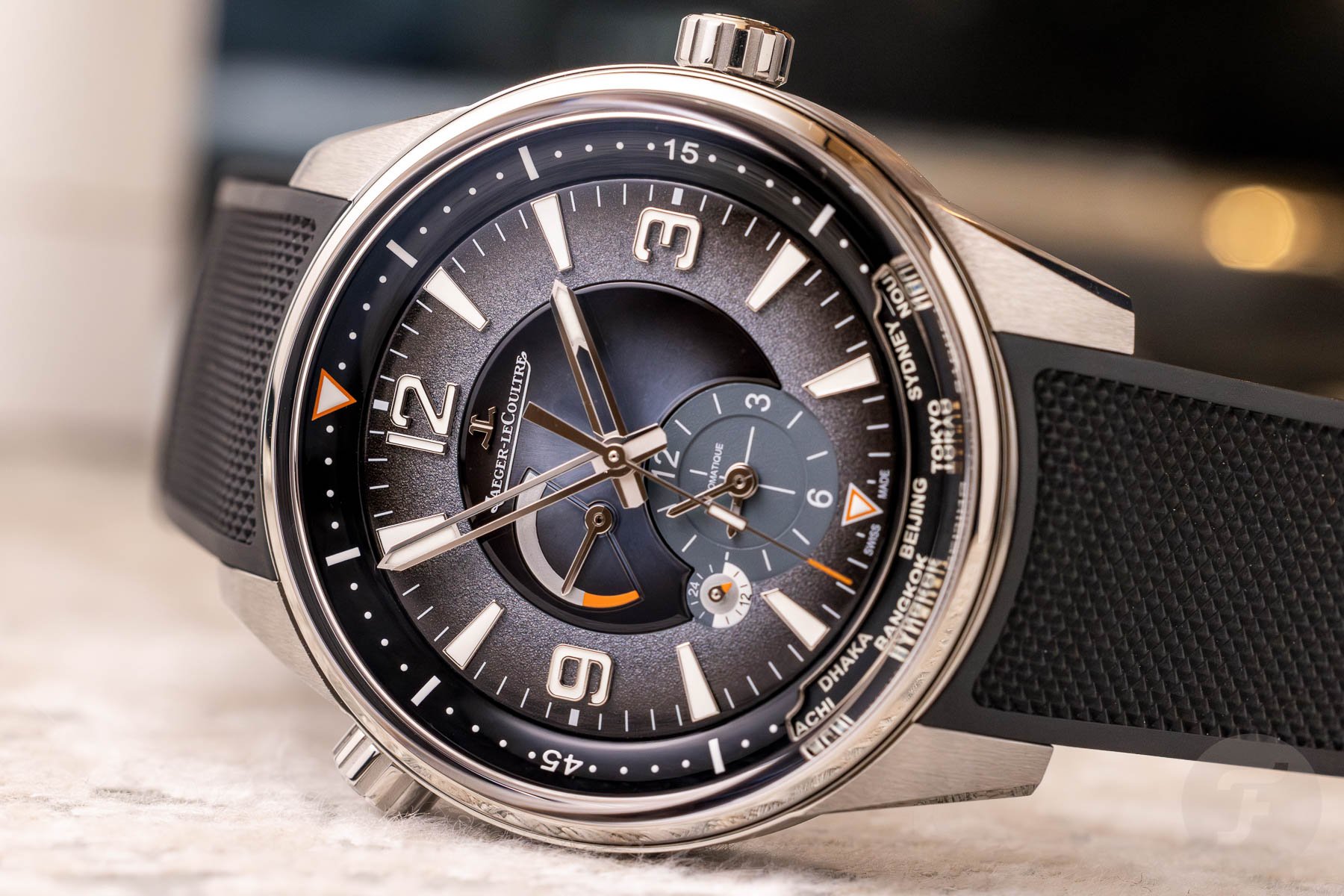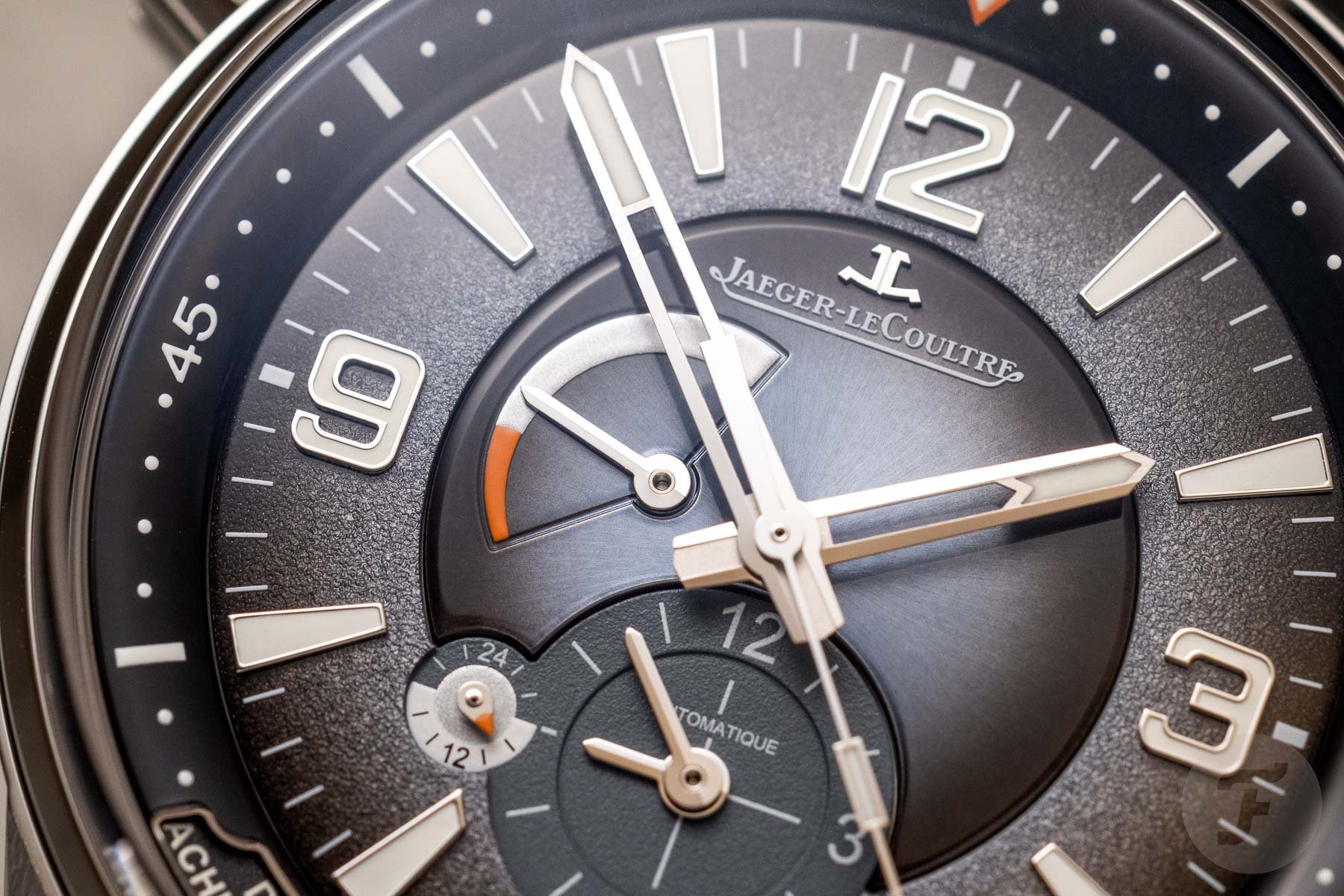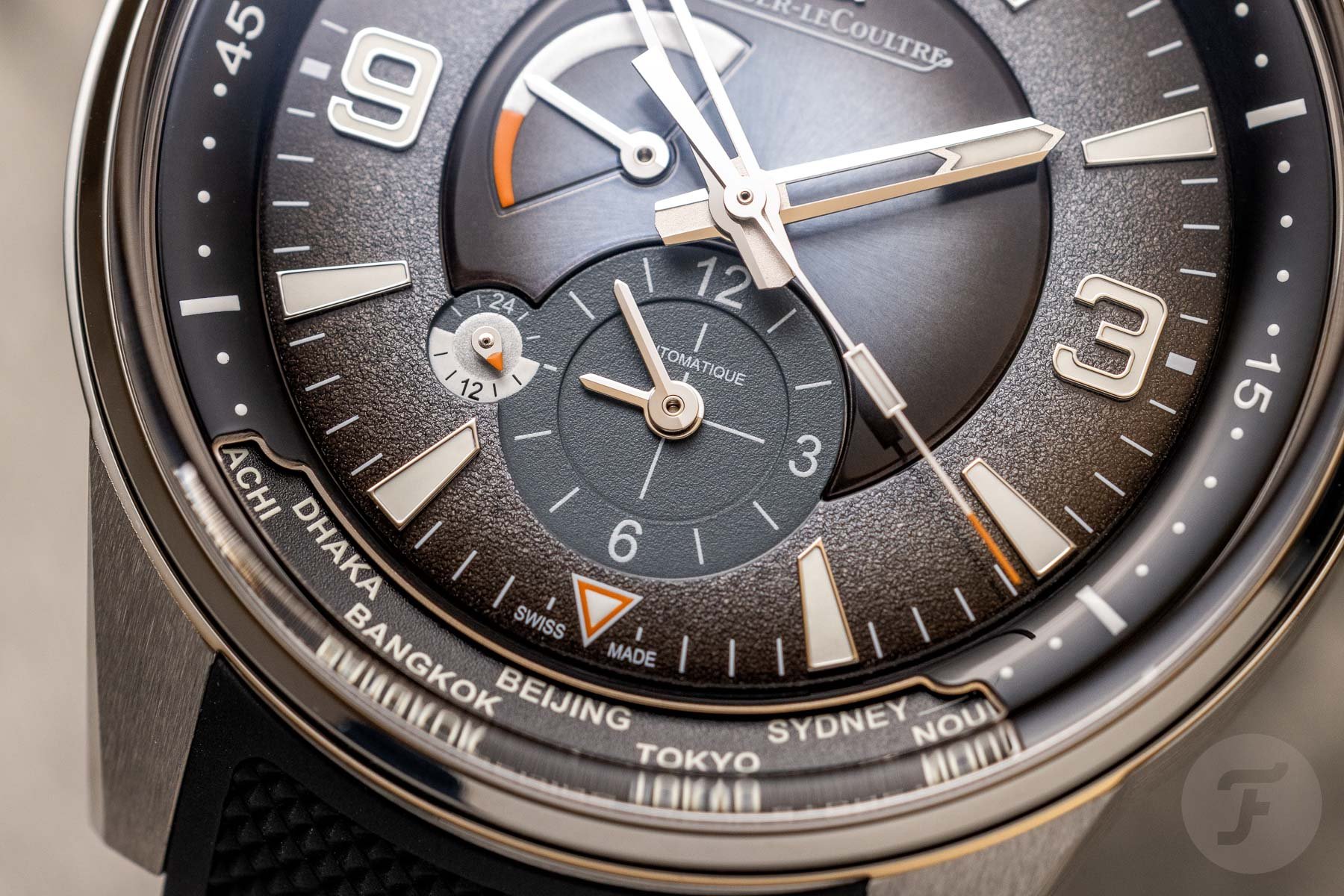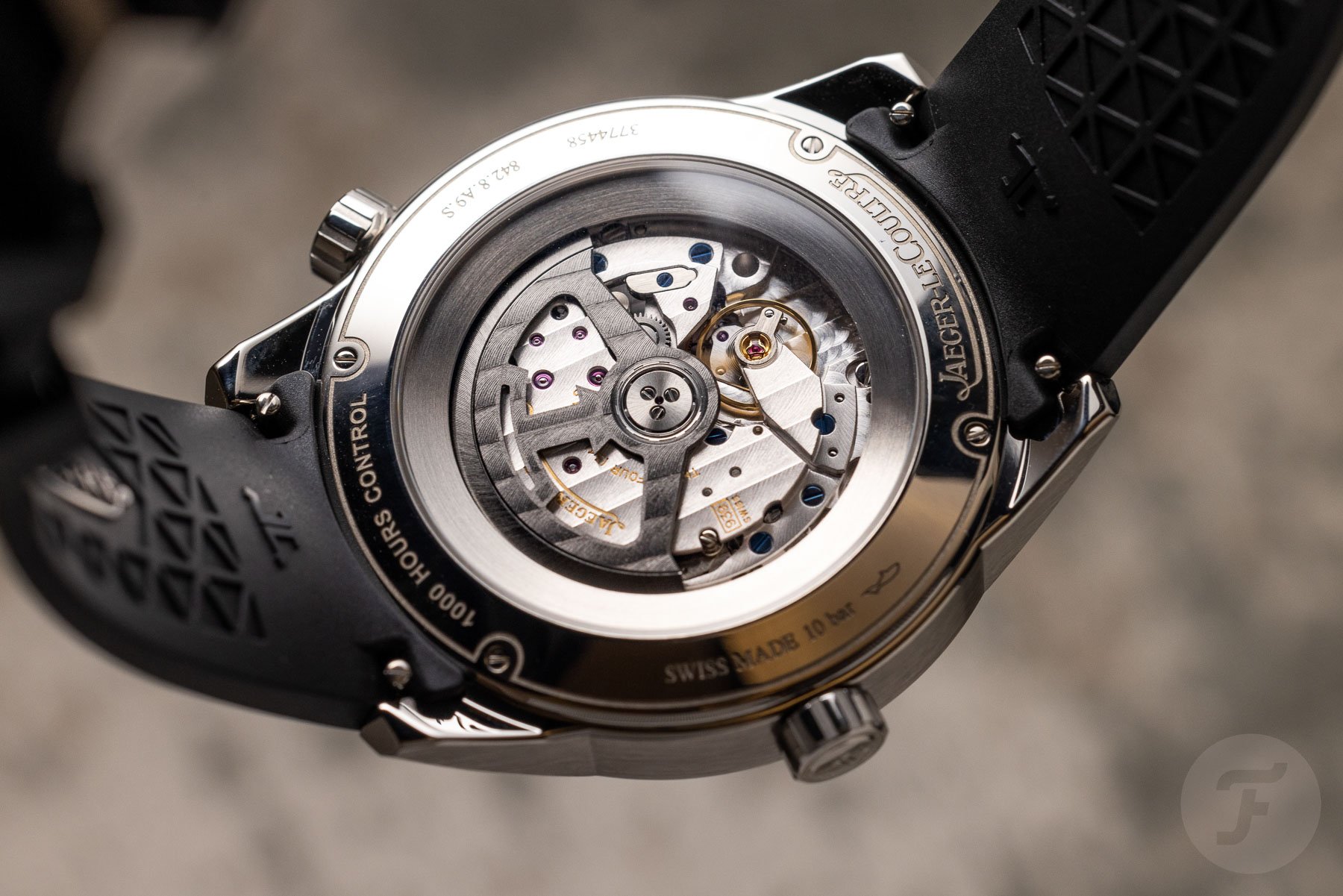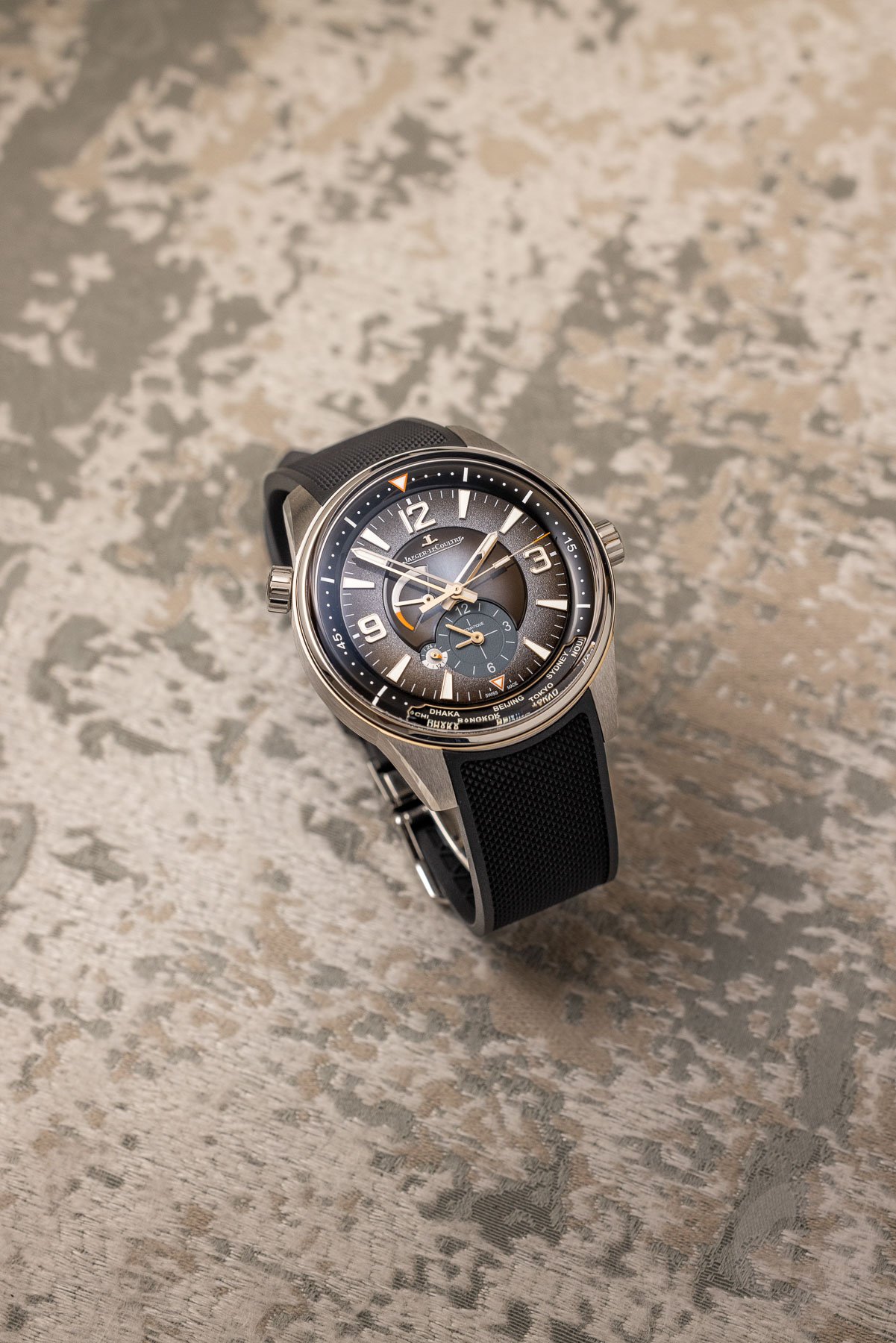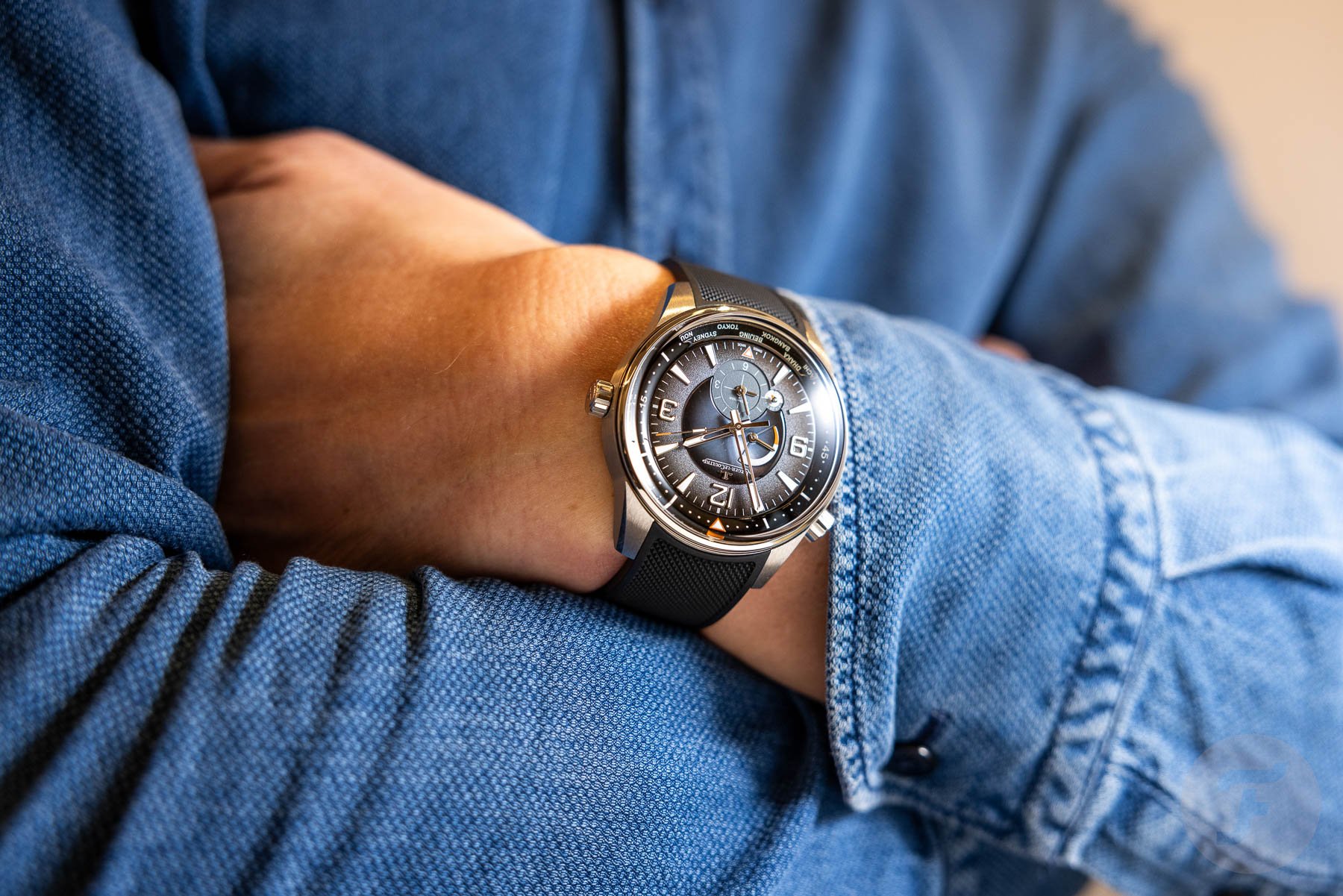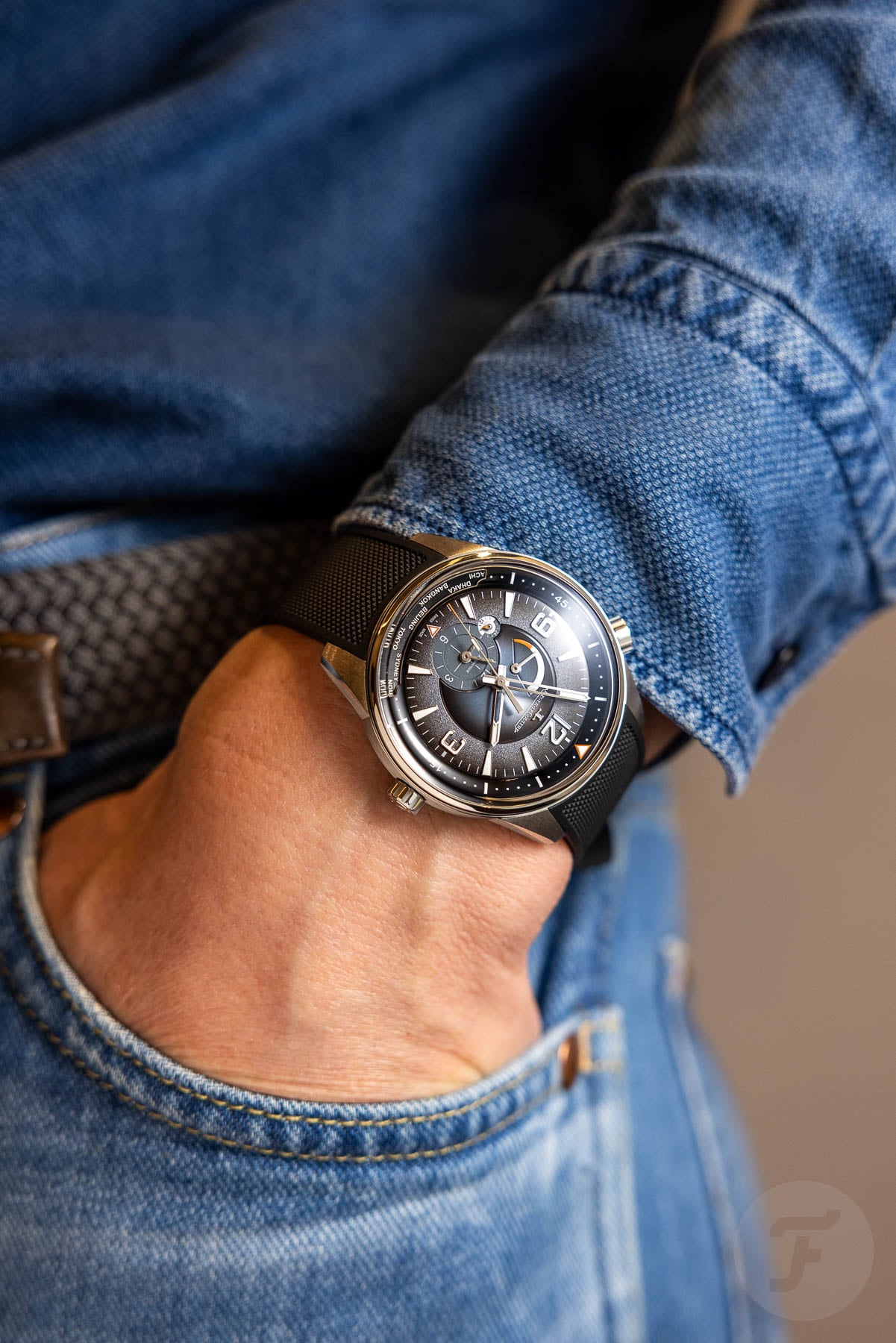Introducing: The Jaeger-LeCoultre Polaris Geographic — A Characteristic Complication Surfaces
The contemporary Jaeger-LeCoultre Polaris debuted six years ago. Since then, new variations have emerged, including a chronograph, a perpetual calendar, and the Mariner Memovox alarm model. But a multi-time-zone version was missing from the revived lineup — until today. The Polaris Geographic is a travel watch with one of Jaeger-LeCoultre’s signature complications. One glance at the newcomer tells you it’s a “JLC,” just like what happens when you see a Reverso. It’s not just the dial layout but also the placement of the two crowns that are typical of the brand. It makes you wonder why it took the manufacture from Le Sentier six years to come up with this functional luxury sports watch that proudly shows its 1960s dive heritage in a stylish and contemporary way.
Off-centered hands, a box-style crystal, a narrow bezel on top of a strong-looking case with clear lines and polished and brushed surfaces, and a dial that looks complicated at first glance but is very easy to read… Yes, the new Jaeger-LeCoultre Polaris Geographic is a watch you won’t mistake for any other timepiece. You won’t even mix it up with the 2017 39mm Master Geographic with its sector dial or the current 40mm Master Control Geographic, watches that also use variants of the caliber 939, resulting in the same dial layout. This Polaris version isn’t just larger at 42mm, but its case is also way more robust. The dial color and texture are completely different too. There are no fewer than 35 layers of lacquer on the Polaris dial, but we’ll save that for later.
The world-traveling and deep-diving Jaeger-LeCoultre Polaris Geographic
The foundation of the Polaris Geographic is the robust 42 × 11.54mm case that’s water resistant to 100 meters. It has a pretty straightforward shape, but the way its brushed and polished surfaces are finished is excellent. You would expect that from a brand like JLC and at this price level, but just like the lacquer on the dial, more about this case later.
Moving from the foundation to the face of the watch, we find skeletonized hands, bold Arabic numerals, and long, trapezoidal indexes. All of these feature Super-LumiNova and complement the distinctive dial with its different apertures. And now we get to the finishing of the dial. The fumé effect might be a polarizing detail of this Polaris (pun intended). The gradient ocean-gray lacquer color leads purists to state that this type of dial has no place in, what is deep down, a tool watch. Others have no problem with the smoky effect because it looks rich and luxurious on a watch that’s quite obviously a luxury object.
The deep gray dial received opaline, graining, and sunburst finishes beneath no fewer than 35 layers of shiny lacquer. The result might be polarizing, but it leads to a very dynamic dial with spectacular visual depth. And what about those little orange details? Well, gray and orange do go well together, but I wonder if keeping this monochromatic wouldn’t have worked out better. You already have a fumé dial and a plethora of textures to deal with visually.
The complicated and functional Polaris Geographic
Through the sapphire crystal on the back, you can observe the finely finished automatic caliber 939 at work. This in-house movement has a 70-hour power reserve and shows hours, minutes, seconds, another one of 24 time zones, a power reserve indicator, and a night/day display. Once you familiarize yourself with where each function is on the dial, the Polaris Geographic is easy and quick to read. The second time zone, for instance, sits in a sub-dial with an hour and a minute hand, a day/night indicator to the left, and the corresponding city right underneath.
Setting this time zone is also not exactly rocket science. For setting the local time and the minute hand of the second time zone, you use the 3 o’clock crown. The one at 10 lets you adjust the ring with 24 city names and the hours of the second time zone simultaneously. Both crowns are on the large side, so operating them is very easy, as should be the case with a sports watch.
Yes, even though the price of the Polaris Geographic is most definitely a luxury one at €17,600, this is also a sports watch that’s very capable of dealing with the rigors of everyday active wear. What do you think, not just about the price but also about the Geographic concept in a Polaris? Is it long overdue or not?
PS — The Polaris Date and Perpetual Calendar also come in new versions
Nothing earth-shattering here, but the Polaris Date now also comes with a gradient ocean-gray lacquer dial. Reference Q9068650, just like the other Date versions, has a 200m-water-resistant case with a 42mm diameter and 13.92mm thickness — that’s thicker than the more complicated Geographic, by the way. Inside that case is the automatic caliber 899 showing hours, minutes, seconds, and the date and offering a 70-hour power reserve. The presence of an inner rotating bezel shouldn’t come as a surprise, and neither should the black rubber strap and the price of €12,100.
We’ve also seen the Polaris Perpetual Calendar in a 42 × 11.97mm pink gold case before but never with a gradient green lacquer dial. This complicated sports watch houses the automatic caliber 868, which shows hours, minutes, seconds, a perpetual calendar (day, date, month, year), and moon phases in both hemispheres. And again, despite its complexity, it’s slimmer than the far simpler Polaris Date — I’m just saying. The QP version, reference Q908263J, is water resistant to 100 meters and comes with both a green rubber and a black alligator leather strap for €57,000. For more info, visit the official Jaeger-LeCoultre website.

